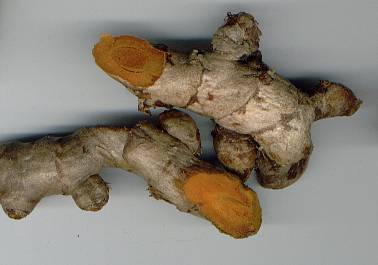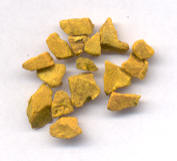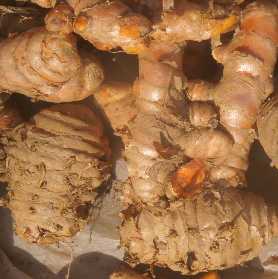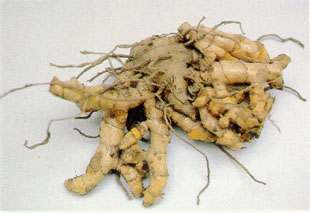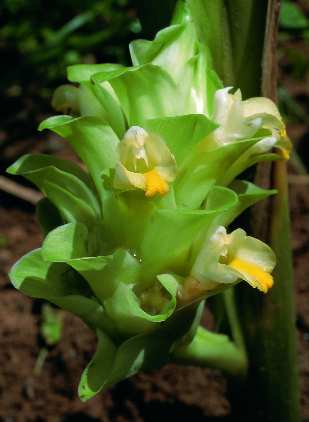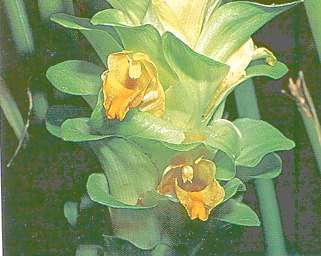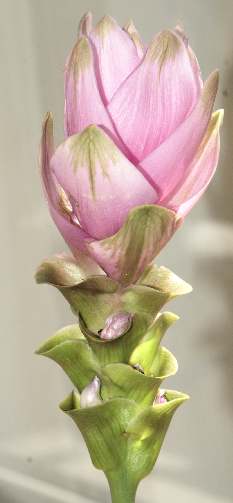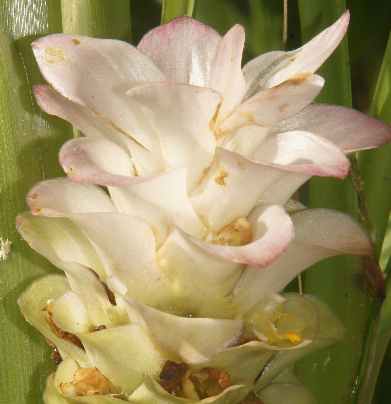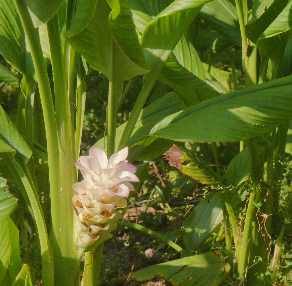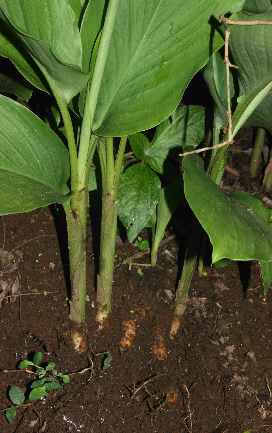
|
|
Turmeric plant with rhizome exposed
|
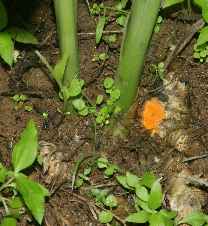
|
|
Turmeric stems with rhizome (cut to show the orange interior)
|
Turmeric is a very important spice in India, which
produces nearly the whole world’s crop and uses 80% of it. Turmeric usage dates
back nearly 4000 years, to the Vedic culture in India, when turmeric was the
principal spice and also of religious significance. Still today, it is employed in some
Hindu rituals, where the yellow colour symbolizes the sun. That cultic usage of turmeric
is more common in the South than in the North.

|
|
Turmeric plant with rhizome exposed
|
Contemporary Indian cooking employs dried and ground turmeric liberally. It is
added to nearly every dish, be it meat or vegetables. I found the
largest quantities of it in boiled lentils (see also dill) or potatoes. The typical procedure is to fry turmeric
in some oil at the beginning of the cooking process (see onion
for a detailled description), which releases its aroma and imparts a deep yellow colour
to to cooking liquid.
Furthermore, turmeric appears in rice dishes (pullao [पुलाव]),
although turmeric-dyed rice is not very common in India, which might surprise people who consider curry rice typical Indian
. Yet it is commonly
used for fried rice, particularly in the South. Fried noodles are a typical food of the mountains in Northern and North Eastern India; in Nepal, they are usually
flavoured with turmeric, while the Indian versions are mostly free of it. All over India and Nepal, fried noodles are called
chow mien [चाउ मीन] and considered a Chinese food
(from Chinese chao mian [炒面]), although the flavouring is very much indianized, particularly in Nepal.

|
|
Turmeric plant with rhizome exposed
|
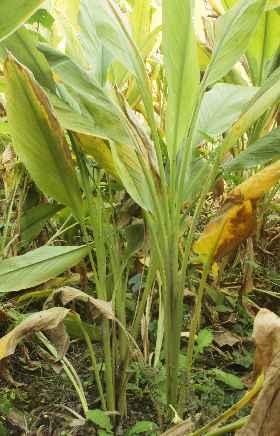
|
|
Turmeric plants on a field in Bangladesh
|
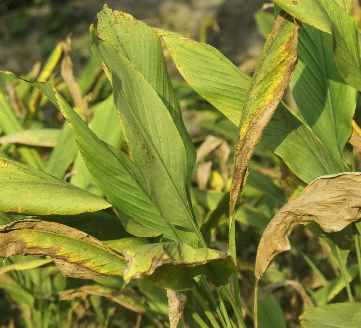
|
|
Before harvest time, the leaves wither
|
Also, turmeric is part of all curry powders (see curry leaves for more information on this Anglo Indian
spice mixture). Probably due to Indian influence, turmeric has also made its way to the
cuisine of Ethiopia (see long pepper), where it is used in pretty the same way.
In South East Asia, the fresh spice is much preferred to the dried. In
Thailand, the fresh rhizome is grated and added to curry dishes; it is also
part of the yellow curry paste (see coconut
for more on Thai curries and curry pastes).

|
|
Turmeric stems with rhizome (cut to show the orange interior)
|
Yellow rice (nasi kuning) is popular on the Eastern islands of
Indonesia; it derives its colour from fresh or dried turmeric. In Bali, where
alone in Indonesia Hinduism has survived, a tasty nasi kuning
is prepared from rice, turmeric, coconut milk and
aromatic leaves (Indonesian bay-leaf, lemon grass and pandanus leaves).
It is considered a cultic dish
and sacrificed to the Gods; no-one who has
ever visited Bali will forget the masses of Balinese streaming to temples and
sacrificing, among other gifts, cones of yellow rice, e. g. in Bali’s most
important temple at Besakih (see also Indonesian
bay-leaf for some details about Balinese cooking and lesser galanga for a famous Balinese recipe). On
Jawa, Indonesia’s most populous island, Hinduism has been abolished in favour
of Islâm; yet nasi kuning is still held a somewhat
sacred dish. Moreover, Indonesian cooks frequently add dried turmeric to their
stews and curries (see greater galangale for an
example).

|
|
Turmeric plant
|
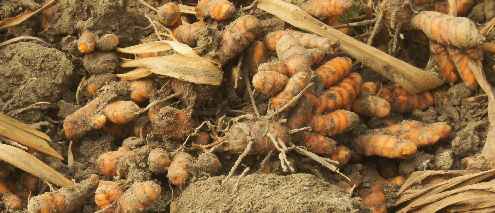
|
|
Turmeric rhizomes just unearthed on a field
|

|
|
Before harvest time, the leaves wither
|
Western cuisine does not use turmeric directly, but it forms part of several
spice mixtures (see above about curry powder) and sauces; it is also
used to impart a bright yellow colour to
mustard paste (see white mustard seed).

|
|
Turmeric plant
|
Turmeric is sometimes confused with saffron because
of similar staining capabilities, although saffron gives a more orange colour.
Since turmeric does not share the fascinating aroma of saffron, it is
not an acceptable substitute or even alternative to it! See annatto for a survey of food colourings.

| |
Turmeric plant
|
|
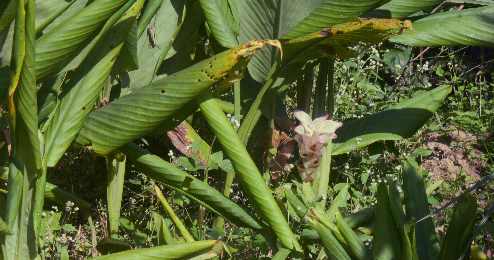
| |
Flowering turmeric plant in a field in Nepal
|
|
The staining capability of turmeric, particularly in the fresh state, may seem a nuisance to everybody who must clean
cooking tools — cutting boards are particularly hard to clean
with brush and soap alone. The dye is, however, not light-proof and fades away
after but one hour in direct sunlight.

| |
Turmeric rhizomes just unearthed on a field
|
|
Turmeric is almost always sold to consumers in ground form. This is reasonable as the dried spice is very difficult to grind under household conditions
(an electric coffee grinder, for example, is very likely to fail with the hard rhizome); on the other hand, the powder loses its fragrance very quickly:
After a few months, only the staining power and an earthy flavour will remain. Thus, it is wise to buy turmeric in small size and use it up quickly;
providing good storage conditions (airtight, dark, dry, cool) is more essential than for many other spices.
The plant known as white turmeric is a close relative of turmeric (zedoary), whose fresh rhizome is not so much used as
a spice, but eaten as a very tasty vegetable. You can do the same with
ordinary yellow turmeric, but it will stain your teeth yellow.









